You’re facing a tough choice in manufacturing: picking the right aluminum alloy for die casting that balances cost, strength, and performance without compromising your project’s timeline. This decision can make or break efficiency, especially when tight tolerances and durability matter most. But don’t worry—here’s the good news: understanding key alloys like A380 or A360 lets you optimize for specific needs, drawing from proven industry standards. As experts in precision casting, we’ve helped countless projects succeed by matching alloys to applications, ensuring reliable results every time.
1. What Defines Aluminum Alloys for Die Casting?
Aluminum alloys for die casting stand out due to their unique blend of properties that suit high-pressure processes. These materials, primarily from the 3xx.x and 4xx.x series, combine aluminum with elements like silicon, copper, and magnesium to enhance castability and end-use performance. You need alloys that flow well into molds and solidify evenly to avoid defects.
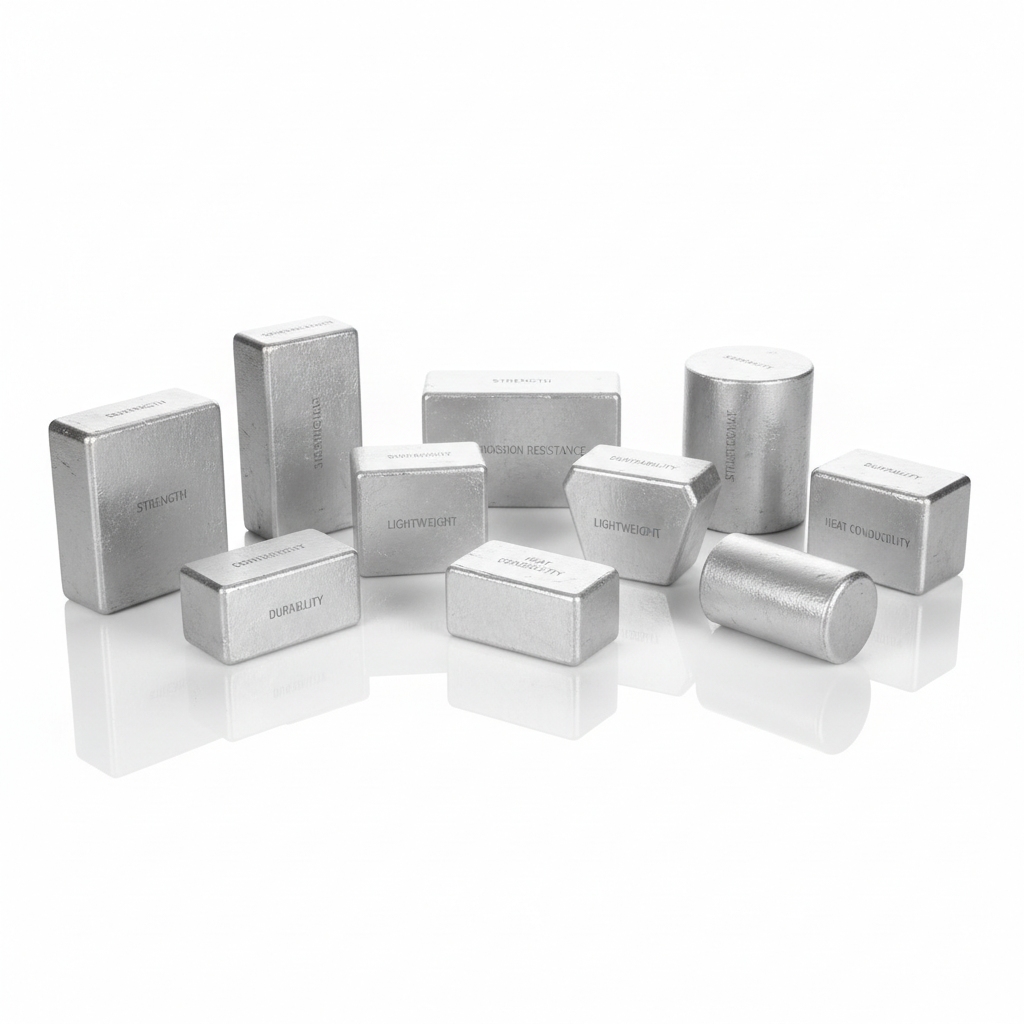
How Do Alloy Compositions Influence Die Casting?
Alloy compositions directly shape the die casting outcome by affecting fluidity and strength. Silicon boosts castability, while copper adds toughness but may reduce corrosion resistance. You might be wondering why this matters—poor composition leads to porosity or weak spots in parts.
- Silicon content (typically 5-12%) improves fluidity for thin walls.
- Copper (up to 4%) enhances strength but increases cracking risk.
- Magnesium refines grain structure for better machinability.
Why Prioritize Fluidity and Solidification Rates?
Fluidity ensures molten metal fills complex molds quickly, while controlled solidification prevents shrinkage defects. In die casting, rapid cooling demands alloys that solidify uniformly to maintain dimensional accuracy. Neglecting this results in uneven parts that fail quality checks.
- High fluidity alloys like those with 9-11% silicon fill intricate dies efficiently.
- Balanced solidification rates minimize hot tears during cooling.
- Testing via flow simulations helps predict behavior in your setup.
What Role Does Thermal Conductivity Play?
Thermal conductivity dictates how fast heat transfers from the alloy to the die, influencing cycle times and part integrity. High-conductivity alloys cool quicker, boosting production speed but risking thermal stresses if not managed.
- Alloys with 100-200 W/mK conductivity shorten cycles by 20-30%.
- This property aids in uniform cooling for larger components.
- Pair with die lubricants to optimize heat dissipation.
Alloy Composition Overview
This table summarizes core elements in common die casting alloys, guiding your selection based on primary influences.
| Alloy | Silicon (%) | Copper (%) | Magnesium (%) | Key Influence | |
|---|---|---|---|---|---|
| A380 | 7.5-9.5 | 3.0-4.0 | 0.10 max | Strength and castability | |
| A360 | 9.0-10.0 | 0.6 max | 0.4-0.6 | Corrosion resistance | |
| 383 | 10.0-12.0 | 2.0-2.5 | 0.10 max | Fluidity for complex shapes |
Analyzing these compositions reveals A380’s versatility for general use, while higher silicon in 383 suits detailed parts—choose based on your mold complexity to avoid rework.
Key Takeaway
Prioritize compositions that align with your project’s demands for fluidity and strength; this foundation ensures defect-free die castings that perform reliably.
2. Which Traits Affect Aluminum Alloys for Die Casting?
When selecting aluminum alloys for die casting, key traits like mechanical properties and process compatibility determine success. These alloys must withstand high pressures while delivering parts that meet specs. But here’s the kicker: overlooking traits like ductility can lead to brittle components that fail prematurely.

How Does Hot Cracking Impact the Process?
Hot cracking occurs when alloys solidify unevenly, causing tears in still-molten areas. Elements like copper exacerbate this in thick sections, demanding careful gating design.
- Minimize by using alloys with balanced silicon-copper ratios.
- Preheat dies to 200-300°C to slow cooling.
- Simulate thermal gradients to predict risks.
What Causes Die Soldering in Castings?
Die soldering happens when aluminum bonds to the steel die, often from high iron content or inadequate lubrication. This roughens surfaces and shortens die life.
- Alloys with low iron (under 1%) reduce adhesion.
- Apply release agents like graphite-based sprays.
- Regular die maintenance prevents buildup.
Why Balance Process Ease with Product Quality?
Ease of casting favors high-silicon alloys, but quality requires strength and finish. Striking this balance avoids high scrap rates in production.
- Evaluate via tensile tests post-casting.
- Adjust parameters like injection speed for optimal flow.
- Prototype runs validate the trade-off early.
Trait Comparison Table
This table compares critical traits across alloys, helping you weigh process ease against quality outcomes.
| Trait | A380 | A360 | 383 | Impact on Process | |
|---|---|---|---|---|---|
| Ductility (%) | 3-5 | 5-7 | 4-6 | Higher aids forming | |
| Hardness (BHN) | 80-100 | 65-85 | 75-95 | Balances wear resistance | |
| Elongation (%) | 2-3 | 4-5 | 3-4 | Indicates toughness |
Balancing these traits shows A360’s edge in quality for corrosion-prone apps, while A380 streamlines high-volume processes—use this to align with your production goals.
Key Takeaway
Focus on traits that harmonize casting efficiency with durable results; this approach minimizes defects and maximizes your project’s ROI.
3. How Do Aluminum Alloys for Die Casting Resist Corrosion?
Corrosion resistance in aluminum alloys for die casting stems from natural oxide layers and alloying elements that protect against environmental degradation. You rely on this for parts exposed to moisture or chemicals. What’s the real story behind varying resistance? It boils down to composition tweaks that seal surfaces effectively.

Which Elements Boost Environmental Durability?
Magnesium and silicon form protective barriers, while minimizing copper limits galvanic reactions. These elements create passive films that self-heal in mild exposures.
- Magnesium (0.5-1%) enhances oxide stability.
- Low copper keeps alloys non-reactive in salts.
- Zinc additions (up to 5%) aid marine durability.
When Is Corrosion a Key Selection Factor?
Prioritize it for outdoor or fluid-contact parts, like automotive fittings or marine hardware. In dry environments, strength trumps this trait.
- Assess via salt spray tests per ASTM B117.
- Factor in service life—aim for 1000+ hours resistance.
- Combine with coatings for extreme cases.
How to Test Alloy Performance in Harsh Conditions?
Accelerated tests simulate real-world exposure, measuring weight loss or pitting. Field trials confirm lab results for your application.
- Use immersion in 3.5% NaCl solutions.
- Electrochemical methods gauge corrosion rates.
- Monitor via visual and microscopic analysis.
Corrosion Resistance Summary
No table here, as this section focuses on testing; instead, note that magnesium-rich alloys like A360 outperform in wet settings, guiding selections for longevity.
Key Takeaway
Select corrosion-focused alloys when exposure risks are high; robust testing ensures parts withstand your project’s demands without early failure.
4. What Wear Resistance Offers Aluminum Alloys for Die Casting?
Wear resistance in aluminum alloys for die casting comes from hardness and microstructure that combat abrasion in moving parts. These alloys shine in gears or housings under friction. Ready for the good part? Hardening treatments amplify this trait for extended service.

How Do Alloys Handle Friction and Abrasion?
Silicon particles act as hardeners, resisting surface wear in sliding contacts. Higher silicon content (10%+) excels here but may embrittle the core.
- A383’s 10-12% silicon suits high-abrasion apps.
- Friction coefficients around 0.3-0.5 indicate performance.
- Avoid pure aluminum for wear-heavy uses.
Why Choose Specific Grades for High-Wear Parts?
Grades like 390 with 16-18% silicon provide superior resistance for pistons or valves, trading castability for longevity.
- Matches OEM specs for automotive wear plates.
- Reduces maintenance by 30-50% in industrial tools.
- Balances with lubricants for optimal life.
What Trade-Offs Exist with Strength?
Boosting wear often sacrifices ductility, leading to cracking under impact. Evaluate via wear tests like Taber abrasion.
- Strength drops 10-20% in high-silicon variants.
- Heat treatments restore some balance.
- Prototype to verify in dynamic loads.
Wear Resistance Comparison
This table outlines wear metrics for key alloys, aiding choices for friction-prone components.
| Alloy | Hardness (BHN) | Abrasion Loss (mg/1000 cycles) | Strength Trade-Off | |
|---|---|---|---|---|
| A380 | 80-100 | 50-70 | Moderate ductility | |
| 390 | 100-120 | 20-40 | Lower elongation | |
| A360 | 65-85 | 60-80 | Better corrosion |
High-silicon alloys like 390 cut abrasion significantly, but assess strength needs—ideal for your wear-critical projects.
Key Takeaway
Opt for wear-resistant alloys in abrasive environments; weigh trade-offs to ensure overall part reliability and cost savings.
5. Can Aluminum Alloys for Die Casting Enhance Finishing?
Finishing compatibility in aluminum alloys for die casting allows seamless anodizing or plating, improving aesthetics and protection. You want alloys that accept treatments without defects. This is where it gets interesting: surface prep directly ties to alloy purity.
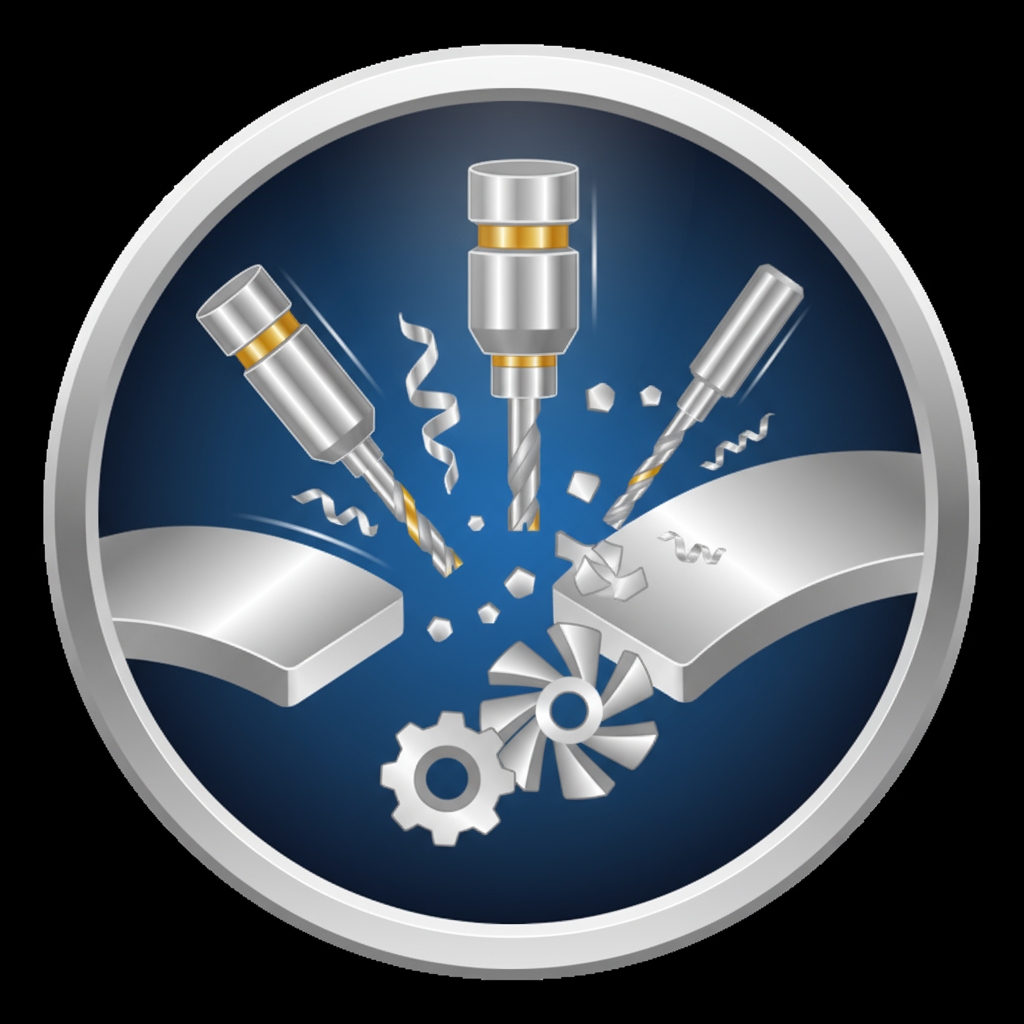
How Well Do They Support Anodizing and Coating?
Low-impurity alloys form uniform oxide layers for anodizing, enhancing color retention and corrosion barriers.
- A360’s clean composition yields Type II anodize finishes.
- Pre-treat with etching for adhesion.
- Coatings like powder add 50-100 microns thickness.
What Improves Machinability Post-Casting?
Silicon-free or low-silicon variants cut cleanly, reducing tool wear in secondary ops.
- Magnesium aids chip breaking during milling.
- Alloys under 5% silicon machine 20% faster.
- Coolants prevent built-up edges.
Why Consider Surface Treatments Early?
Early planning avoids compatibility issues, like poor plating on high-copper alloys, ensuring end-use specs.
- Integrate surface treatments for aluminum die castings in design phase.
- Test adhesion per ASTM D3359.
- Budget 10-15% for finishing costs.
Finishing Compatibility Table
No table in this last H3; focus on early integration—alloys like A360 excel in treatments, streamlining your finishing workflow.
Key Takeaway
Choose finish-friendly alloys from the start; this enhances appearance and durability, simplifying your production pipeline.
6. Which Are Top Aluminum Alloys for Die Casting?
Top aluminum alloys for die casting include A380, A360, and 383, each tailored to common needs like strength or detail. These standards dominate due to proven reliability. Here’s the deal: matching them to your project unlocks efficiency.
Explore our aluminum casting expertise for optimized selections in high-pressure apps.
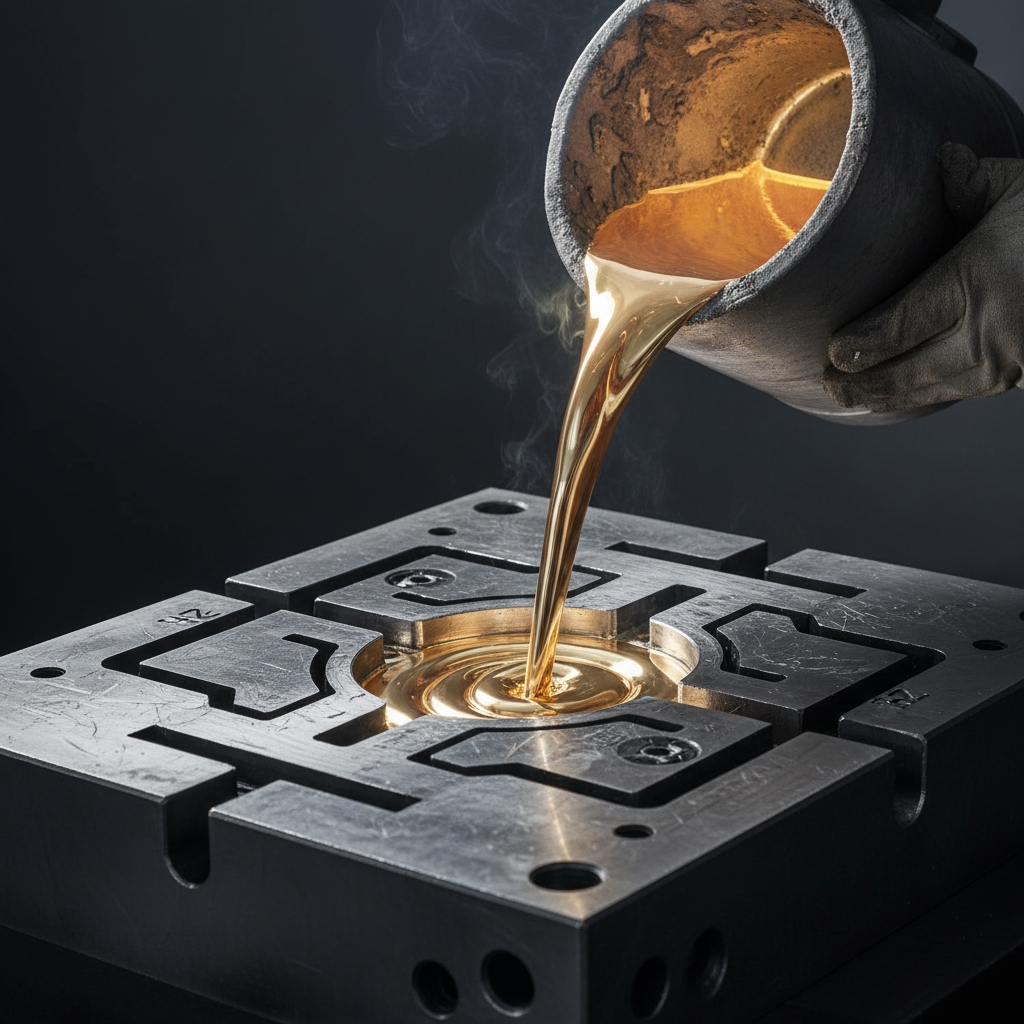
How Does A380 Perform in Everyday Uses?
A380 offers balanced properties for housings and brackets, with good machinability and pressure tightness.
- Tensile strength: 45 ksi, suits general automotive.
- Casts thin walls down to 0.06 inches.
- Recycles easily at 95% efficiency.
What Makes A360 Ideal for Corrosion Needs?
A360’s magnesium content boosts resistance, perfect for marine or chemical parts without extra coatings.
- Elongation up to 5%, for flexible designs.
- Low copper minimizes galvanic corrosion.
- Used in pumps for 10+ year lifespans.
Why Select 383 for Intricate Components?
383’s high silicon ensures excellent fluidity for complex gears or electronics, filling fine details.
- Fluidity index 20% above A380.
- Reduces porosity in multi-cavity dies.
- Post-machining yields smooth surfaces.
Top Alloys Performance Table
This table highlights strengths of leading alloys, guiding your pick for specific project demands.
| Alloy | Tensile Strength (ksi) | Fluidity Rating | Corrosion Index | |
|---|---|---|---|---|
| A380 | 45 | Good | Fair | |
| A360 | 42 | Fair | Excellent | |
| 383 | 47 | Excellent | Good |
A380 leads in versatility for broad apps, but 383 shines for details—analyze against your specs for best fit.
Key Takeaway
Among top alloys, A380 suits most projects; tailor to corrosion or complexity for peak performance.
7. How to Compare Aluminum Alloys for Die Casting?
Comparing aluminum alloys for die casting involves metrics like strength, cost, and castability to find the optimal match. You evaluate via standards from NADCA. What’s the catch? No single alloy fits all—context rules.

What Metrics Define Machinability and Strength?
Machinability scores tool life, while strength metrics like yield point ensure load-bearing.
- Machinability: A360 rates 1.2 vs. steel’s 1.0.
- Yield strength: 40-50 ksi across grades.
- Factor fatigue for cyclic loads.
How Do 3xx.x Series Stack Against 4xx.x?
3xx.x (Al-Si-Cu) excel in castability; 4xx.x (Al-Si) prioritize wear but lack copper’s strength boost.
- 3xx.x better for complex shapes.
- 4xx.x harder, for pistons.
- Cost: 3xx.x 10% cheaper typically.
Why Use Tables for Quick Alloy Evaluation?
Tables condense data for fast decisions, highlighting trade-offs in one view.
- Include thermal, electrical properties.
- Update with supplier specs.
- Cross-reference for hybrids.
Comparison Metrics Table
This table contrasts series, streamlining your evaluation for strength and ease.
| Series | Machinability | Strength (ksi) | Cost Factor | |
|---|---|---|---|---|
| 3xx.x | High | 40-50 | Low | |
| 4xx.x | Medium | 35-45 | Medium |
3xx.x series dominate for balanced projects, offering superior machinability—use this to prioritize your key metrics.
Key Takeaway
Compare via structured metrics; this method reveals the best alloy, saving time and resources.
8. What Applications Suit Aluminum Alloys for Die Casting?
Aluminum alloys for die casting fit automotive, electronics, and marine apps due to lightweight strength. These versatile materials reduce weight by 30-50% over steel. You might be wondering how they adapt—design freedom is key.
Leverage the investment casting process for aluminum alloys for intricate, low-waste parts in diverse fields.
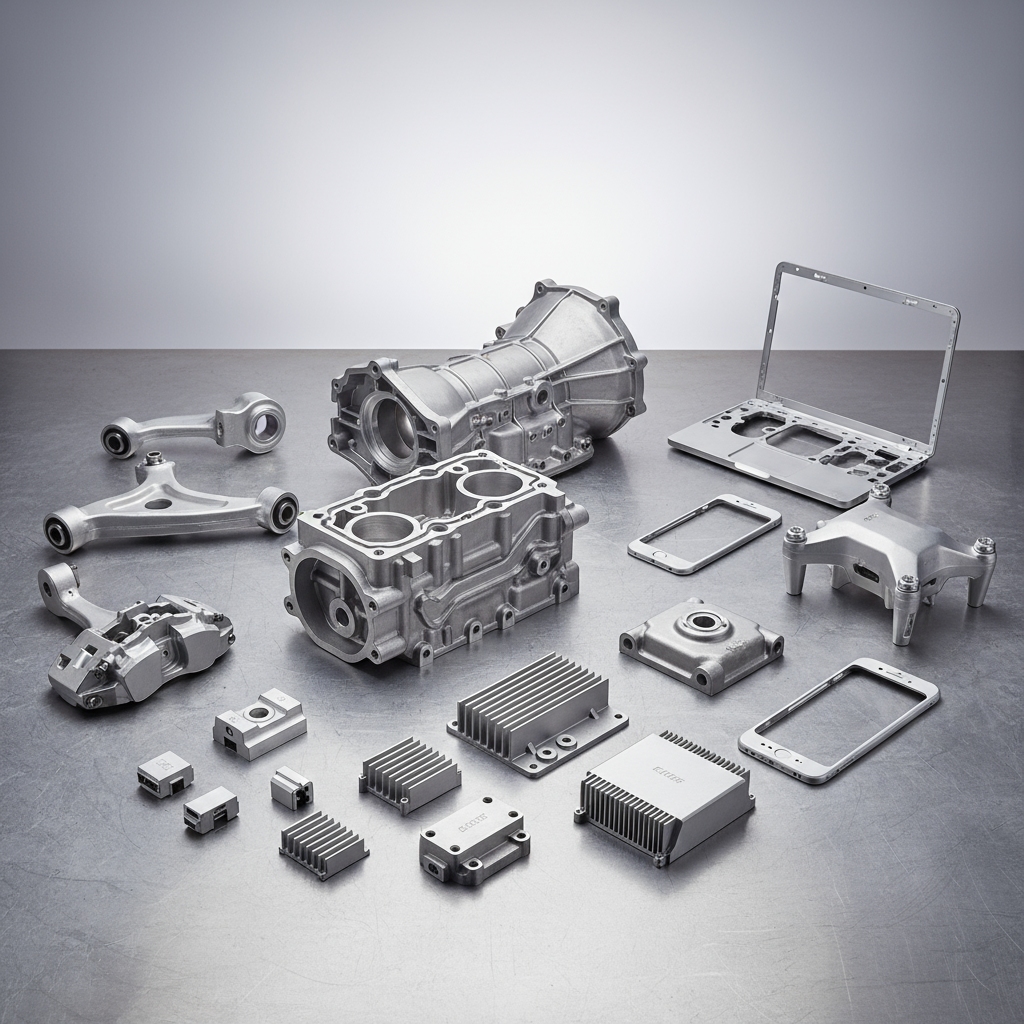
How Do They Excel in Automotive Parts?
In engines and chassis, alloys like A380 cut fuel use while handling vibrations.
- Cylinder heads: High thermal conductivity.
- Brackets: 40 ksi strength for safety.
- EV housings: Electrical conductivity aids batteries.
Why Use Them in Electronics Housings?
Low weight and EMI shielding make them ideal for casings in devices.
- Heat sinks: Dissipate 150 W/mK efficiently.
- Precision fits for PCBs.
- Anodized finishes for aesthetics.
What Benefits for Marine and Industrial Tools?
Corrosion resistance in saltwater; durability in tools extends life.
- Propellers: A360 resists biofouling.
- Valves: Wear resistance under pressure.
- 20% weight savings in rigs.
Application Suitability Table
This table maps alloys to apps, clarifying benefits for your sector.
| Application | Recommended Alloy | Key Benefit | Weight Reduction | |
|---|---|---|---|---|
| Automotive | A380 | Strength | 40% | |
| Electronics | A360 | Conductivity | 50% | |
| Marine | 383 | Corrosion | 30% |
Automotive favors A380 for robustness, while marine picks corrosion leaders—tailor to elevate your application’s efficiency.
Key Takeaway
Match alloys to app-specific needs; this ensures lightweight, durable solutions across industries.
9. How to Select Aluminum Alloys for Die Casting Projects?
Selecting aluminum alloys for die casting requires assessing project specs against alloy datasheets. Start with end-use demands to avoid mismatches. But wait—cost analysis seals the choice.
Incorporate precision CNC machining services for tight tolerances post-casting.
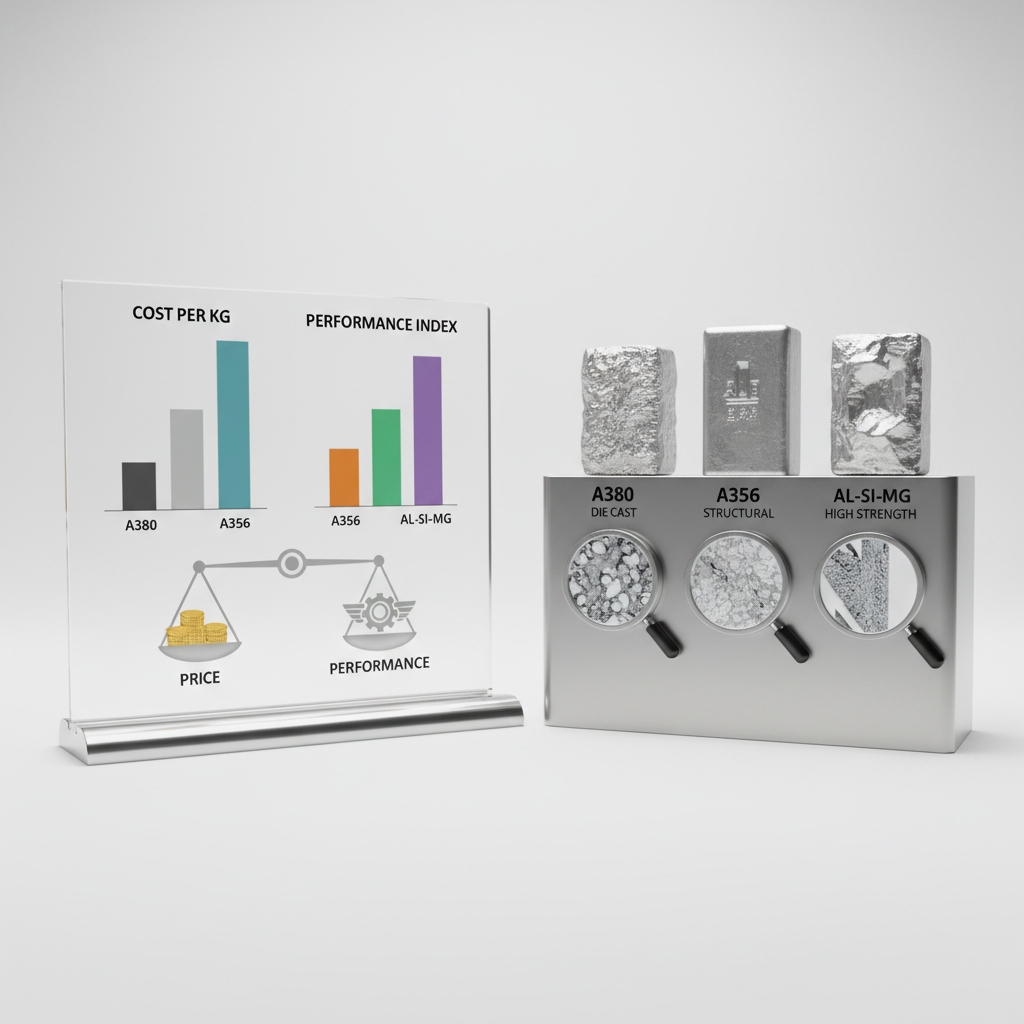
What Criteria Prioritize Strength Over Castability?
For load-bearing parts, favor copper-rich alloys despite fluidity dips.
- Tensile needs above 45 ksi.
- Simulate stresses via FEA.
- Prototype to confirm.
How to Weigh Cost Versus Long-Term Performance?
Initial material costs (A360 at $2.50/lb) versus lifecycle savings from durability.
- Factor scrap rates under 2%.
- ROI calculations for 10k+ runs.
- Supplier quotes for volume.
Why Consult Specs for Custom Needs?
Datasheets detail variants; customize with minor tweaks for unique alloys.
- Review ASTM B85 standards.
- Lab tests for hybrids.
- Expert input refines options.
Selection Criteria Table
This table weighs factors, guiding balanced decisions for your project.
| Criteria | Strength Focus | Cost Focus | Performance Metric | |
|---|---|---|---|---|
| Alloy Choice | A380 | 383 | Lifecycle Cost | |
| Priority | High Load | Volume | Durability Index | |
| Trade-Off | Lower Fluidity | Fair Strength | Scrap Reduction |
Strength prioritizes A380 for demanding apps, but cost leans to 383—consult specs to optimize your unique requirements.
Key Takeaway
Base selection on criteria like strength and cost; this targeted approach delivers tailored, high-value outcomes.
10. What Future Trends Shape Aluminum Alloys for Die Casting?
Future trends in aluminum alloys for die casting point to eco-friendly, high-performance variants driven by sustainability and tech advances. You can anticipate recyclable formulas that meet stricter regs. This changes everything: nano-additives will redefine properties.
Post-casting heat treatment options for cast aluminum alloys will enhance these next-gen materials for demanding uses.

How Might Sustainable Alloys Emerge?
Recycled-content alloys (80%+ scrap) reduce carbon footprints by 90% in production.
- Bio-based modifiers for green casting.
- Lifecycle assessments per ISO 14040.
- Market shift to circular economy.
What Innovations Improve Recyclability?
Additive tweaks ease sorting and remelting, minimizing losses.
- Traceable alloys via blockchain.
- 95% recovery rates targeted.
- Hybrid with magnesium for lighter recycles.
Why Adapt to Advanced Manufacturing Demands?
Industry 4.0 demands alloys for 3D integration and AI-optimized casting.
- Nano-silicon for ultra-strength.
- Compatibility with additive processes.
- Forecast 15% growth in EV apps.
Future Trends Table
This table forecasts key shifts, preparing you for evolving alloy landscapes.
| Trend | Innovation | Impact on Die Casting | Sustainability Gain | |
|---|---|---|---|---|
| Sustainable Alloys | Recycled Content | Lower Emissions | 90% Carbon Cut | |
| Recyclability | Sortable Formulas | Easier Remelting | 95% Recovery | |
| Advanced Demands | Nano-Additives | Enhanced Properties | Versatile Apps |
Sustainable trends favor recycled A380 variants, boosting eco-performance—adapt now to stay ahead in manufacturing.
Key Takeaway
Embrace trends like sustainability; this positions your projects for innovative, compliant futures.
Conclusion
Aluminum alloys for die casting offer versatile solutions, from A380’s strength to A360’s corrosion resistance, tailored to automotive, electronics, and beyond. By comparing traits, applications, and future innovations, you make informed choices that enhance efficiency and durability. Contact us today to discuss your needs. Ready to transform your project with precision alloys? Partner with us for lightweight, high-performance parts that drive success and sustainability.
FAQ
Q1: What is the most versatile aluminum alloy for die casting? A380 tops the list for its balance of strength, castability, and cost—ideal for 80% of general projects like housings.
Q2: How do costs vary among popular alloys? A380 runs
2−3/lb,A3602-3/lb, A360 2−3/lb,A360
2.50-3.50/lb due to magnesium; volume buys cut 10-20%, but factor finishing extras.
Q3: Can these alloys be recycled effectively? Yes, aluminum alloys recycle at 95% efficiency with minimal property loss, supporting sustainable loops in die casting.
Q4: What defects commonly affect die cast parts? Porosity and cracking hit hardest; mitigate with proper gating and alloy fluidity to keep scrap under 5%.
Q5: How to source high-quality aluminum alloys? Partner with certified suppliers like those ISO 9001-compliant; request melt certs and test samples for consistency.



